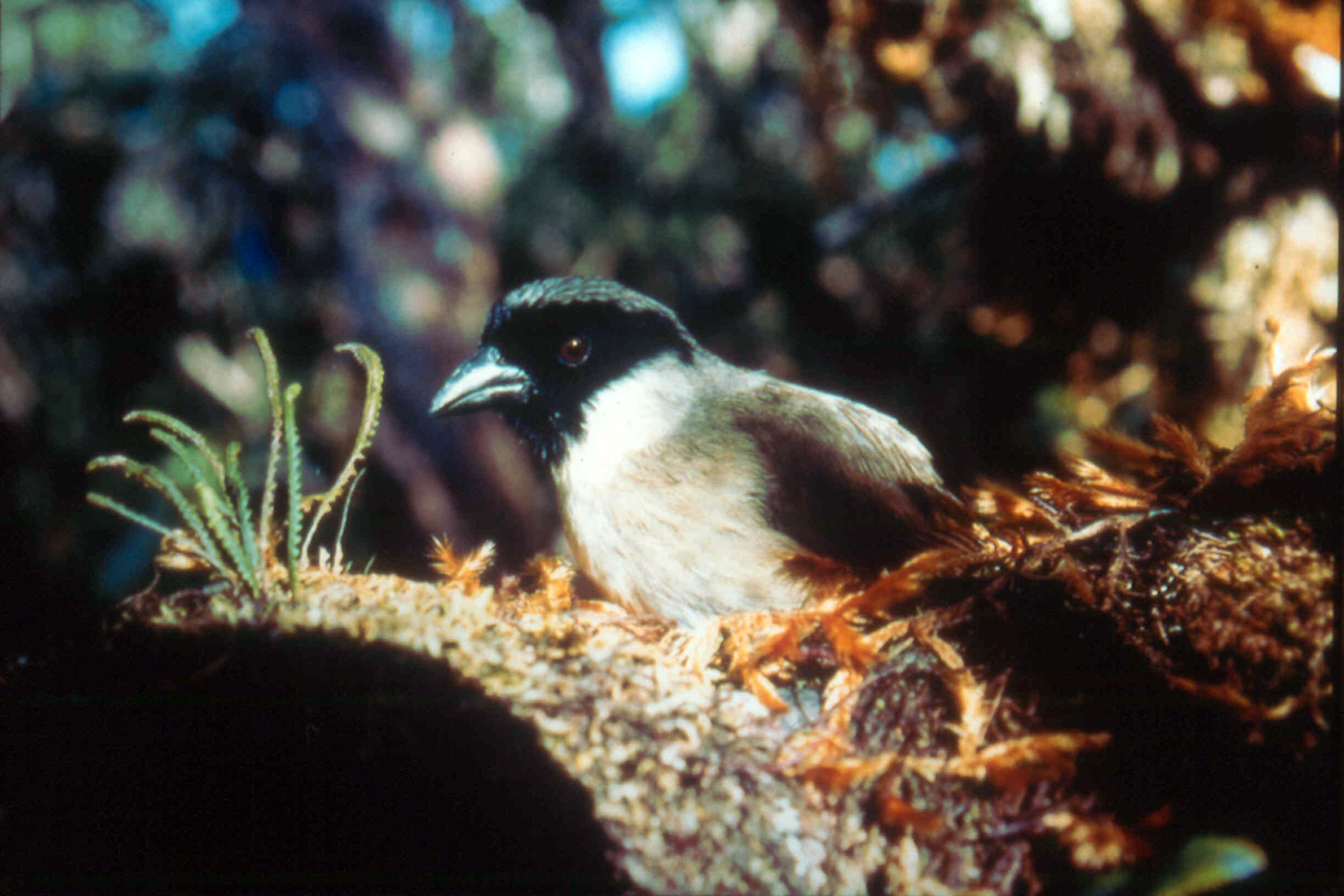Last Po’ouli on Earth
In September 2004, researchers were racing against time in a last-ditch effort to save the po’ouli, a small honeycreeper native to Maui that was considered the world’s most endangered bird. The species had not been discovered until 1973, when it was already in serious trouble. In 30 years, its numbers fell from a few dozen to only three. The Zoological Society of San Diego, U.S. Fish and Wildlife Service, and Hawaii’s Department of Land and Natural Resources came together to try to locate those last three birds and bring them into the Zoological Society’s Maui Bird Conservation Center, in hopes that breeding could perhaps save the species. “If we do not bring them in now, they may never be seen again,” said Michael Buck, administrator of the state Division of Forestry and Wildlife. “Maintaining and breeding the po’ouli will be the ultimate avicultural challenge, to say the least,” Alan Lieberman, Zoological Society conservation coordinator, told reporters. “The po’ouli may have too few surviving individuals from which to start building a healthy breeding population, but we have to try.”
Researchers went out searching the rugged, humid mountainsides for any signs of the three birds—and they rejoiced when they did find one, a male, and were able to successfully bring him to the facility. With renewed intensity, they continued searching for the others, but ultimately they were never able to find signs of them. What had started with a gleam of hope settled into the sad reality that this species was, in fact, going to go extinct—a heartbreaking outcome for these dedicated people.
November 26, 2004 was a sad day for everyone involved: the male po’ouli, the last of his kind on Earth, died. It turned out that he had been quite old for his species and passed away from age-related causes.
It was Thanksgiving weekend, and researcher Marlys Houck in the Genetics Department at CRES received a call—would someone be available to accept a package containing the preserved bird to extract his cells for the Frozen Zoo? In 2004, techniques for freezing bird cells were in the early stages, so the pressure was on. Thankfully, Marlys was able to grow the honeycreeper’s cells and add them to the Frozen Zoo. “We will never hear the po’ouli honeycreeper’s song again, but we can learn from its genetic code,” said Dr. Oliver Ryder, director of genetics. To date, the po’ouli honeycreeper is the only extinct species represented in the Frozen Zoo. And as Alan Lieberman said, the campaign to save the species helped people understand the threat that other endangered Hawaiian bird species face. “Even in death this bird served a cause,” he said. “He helped people understand the reality of extinction.”
